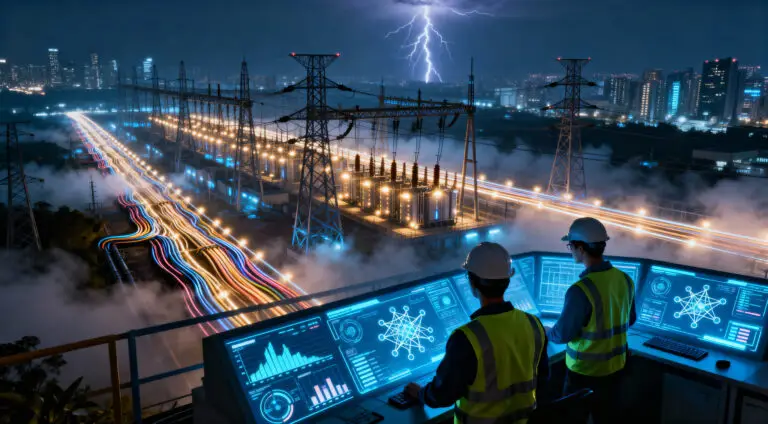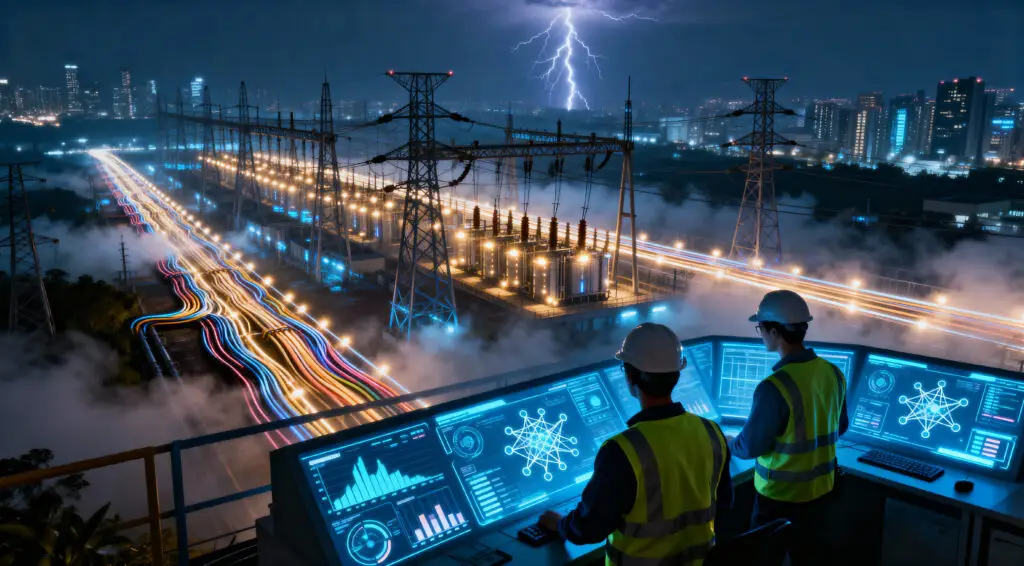The emergence of artificial intelligence is profoundly changing the way we interpret and deal with extreme weather conditions. In a significant breakthrough, researchers created an AI-powered model that predicts severe thunderstorms approximately ten times faster than the previously used methods while maintaining a high level of accuracy.
Flora and Potvin have tailored GraphCast, Google’s advanced neural network, for high-resolution weather forecasts, thus expanding the frontiers of AI into short-term local storm prediction, one of meteorology’s greatest challenges. This led to the development of an innovative system named WoFSCast, which has the potential to transform forecasting of dangerous weather events such as tornadoes, flash floods, and severe thunderstorms.
Achieving Speed and Precision
The key to this innovation is AI training focused on the intricate atmospheric region dynamics. While previous AI models were constrained to global forecasts because of data availability, WoFSCast opens new frontiers with the inclusion of NOAA’s Warn-on-Forecast (WoF) System’s storm data.
With the intent to issue life-saving, timely alerts, the initiative WoF focuses on producing short-term forecasts for regions that are likely to experience hazardous weather. Thunderstorms are notoriously difficult to predict, but using data from WoFSCast’s systems, scientists have been able to master the anatomy of thunderstorms, specifically their updrafts, which are energy-funneling features and cold air pockets that rest under storm systems, which dictate their growth and motion.
As a result, WoFSCast can now generate accurate predictions of storm evolution minute-by-minute for up to two hours in the future. In testing, WoFSCast was able to produce 70-80% accurate forecasts in comparison to those generated by NOAA’s established Warn-on-Forecast system. Unlike traditional systems that rely on performing complex calculations, WoFSCast was able to complete forecast generation in 30-40 seconds using a single GPU. WoFSCast’s performance outpaces current non-AI systems by a minimum of 10x.
The Future of Predicting Severe Weather
WoFSCast’s performance outpaces current non-AI systems by a minimum of 10x. This boost in speed is nothing short of revolutionary in the pursuit of safeguarding the public domain. Natural disasters are shrouded by unpredictability—aiding agility and shifting the focus to fast response time. Advanced prediction tools equip meteorologists with an early warning system, which directly improves the quality of life for entire communities.
AI-enhanced systems have the potential to alleviate the human and economic toll of natural disasters due to advanced forecasting capabilities. From tornadoes threatening to tear through towns to rural areas facing the prospect of flash floods, disasters like these require timely responses to avert extensive damage and loss of life. The WoFSCast system is a promising start towards reducing response times significantly.
Future plans: From Cyclones and Wildfires to Storms
The creators of WoFSCast have the capability of producing thunderstorm-scale predictions, but they believe that the model can be extended much further. With adequate supplementary training and data, the system may be modified to forecast the rainfall and surface winds in tropical cyclones, which are critical to hurricane-prone areas.
The ever-increasing need to predict wildfire spread with the rapidly advancing climate change is another reason that AI could be extremely useful. Learning to model diverse environmental behaviors could bolster the fight against natural disasters with the aid of tools such as WoFSCast.
An AI-Assisted Future for Forecasting
AI has sought to address the meteorological challenge of accurately predicting the weather since its advent, given that meteorology necessitates processing deep learning algorithms on a wealth of heterogeneous datasets. WoFSCast is an AI-empowered tool for weather prediction that is already fine-tuned for precise location-based predictions.
While the National Weather Service or other institutions, such as private forecasting companies, explore the multiple possibilities that AI can provide for operational forecasting, innovations like WoFSCast are glimpses into the world of prediction skimming on the horizon.
There is no reason to fear the great tempest of storms and other ferocious forces of nature, as, with the aid of technology, we are granted sufficient opportunity to navigate away from such unnatural disasters.















